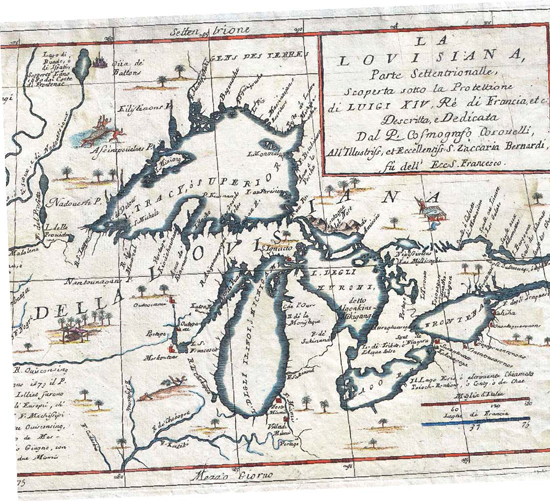
Please visit our website, www.garethstevens.com. For a free color catalog of all our high-quality books, call toll free 1-800-542-2595 or fax 1-877-542-2596.
Cataloging-in-Publication Data
Names: Shofner, Melissa Ra.
Title: Great lakes shipwrecks / Melissa Ra Shofner.
Description: New York : Gareth Stevens, 2017. | Series: Hidden history | Includes index. Identifiers: ISBN 9781482457988 (pbk.) | ISBN 9781482458008 (library bound) | ISBN 9781482457995 (6 pack)
Subjects: LCSH: Shipwrecks--Great Lakes (North America)--History--Juvenile literature. | Shipwrecks--Juvenile literature.
Classification: LCC G525.S56 2017 | DDC 917.704--dc23
First Edition
Published in 2017 by
Gareth Stevens Publishing
111 East 14th Street, Suite 349
New York, NY 10003
Copyright 2017 Gareth Stevens Publishing
Designer: Katelyn E. Reynolds
Editor: Therese Shea
Photo credits: Cover, p. 1 Rolf Hicker/All Canada Photos/Getty Images; cover, pp. 132 (tear element) Shahril KHMD/Shutterstock.com; cover, pp. 132 (background texture) cornflower/Shutterstock.com; cover, pp. 132 (background colored texture) K.NarlochLiberra/Shutterstock.com; cover, pp. 132 (photo texture) DarkBird/ Shutterstock.com; cover, pp. 132 (notebook paper) Tolga TEZCAN/Shutterstock.com; p. 5 Brian J. Skerry/National Geographic/Getty Images; p. 7 (inset) K8 fan/ Wikipedia.org; p. 7 (main) BotMultichill/Wikipedia.org; p. 9 (inset) Thegreatdr/ Wikipedia.org; p. 9 (main) Nanamac47/Wikipedia.org; p. 11 Bill Curtsinger/ National Geographic/Getty Images; p. 13 Stephen Frink/Image Source/Getty Images; p. 15 (inset) Royalbroil/Wikipedia.org; p. 15 (main) T2nelson/Wikipedia.org; p. 17 Howicus/Wikipedia.org; p. 19 (inset) Mtsmallwood/Wikipedia.org; p. 19 (main) Shyamal/Wikipedia.org; p. 21 Rainer Lesniewski/Shutterstock.com; p. 23 (inset) Layne Kennedy/Corbis Documentary/Getty Images; p. 23 (main) Greenmars/ Wikipedia.org; p. 25 Toronto Star Archives/Toronto Star via Getty Images; p. 27 Kilian FICHOU/AFP/Getty Images; p. 29 U.S. Army Corps of Engineers Detroit District/Wikipedia.org.
All rights reserved. No part of this book may be reproduced in any form without permission in writing from the publisher, except by a reviewer.
Printed in the United States of America
CPSIA compliance information: Batch #CW17GS: For further information contact Gareth Stevens, New York, New York at 1-800-542-2595.
CONTENTS
On a cold, dark night in February 1899, ice in Lake Michigan damaged the hull of the John V. Moran, a steamship carrying flour and other goods. The crew was rescued by a nearby boat, which returned the next day to tow the Moran to shore. It was soon clear that the ship couldnt be saved. The Moran was left to sink, and within a few days, it was gone. It wasnt seen again for 116 years.
Unpredictable, or uncertain, weather makes the Great Lakes some of the most dangerous waters in the world. In fact, the Moran is just one of several thousand shipwrecks that have occurred in the lakes since the 1600s. Theres a lot of history hidden in the chilling depths of the Great Lakes!

PERFECTLY PRESERVED
On June 4, 2015, a team from the Michigan Shipwreck Research Association (MSRA) picked up a shipwreck on their sonar. They used a remotely operated vehicle, or ROV, to record video of the wreck. It turned out to be the John V. Moran. To everyones surprise, the ship was in perfect condition, even after sitting at the bottom of Lake Michigan for more than 100 years. It appeared to be missing only one piece!

ROVs allow people to safely explore the depths of the Great Lakes. There's still much to discover, including many lost shipwrecks.
The Great Lakes are found in the northeastern United States. Lake Huron, Lake Superior, Lake Erie, and Lake Ontario share borders with Canada, but Lake Michigan is located completely in the United States. Many rivers and smaller waterways connect the five lakes. Together, the Great Lakes form the largest body of freshwater on the planet. About 20 percent of Earths fresh surface water is found here.
The Great Lakes were formed by a glacier that covered the area around 14,000 years ago. The glacier was more than half a mile (0.8 km) thick and carved out the lakes as it melted and moved across the region. Today, the Great Lakes cover about 95,000 square miles (246,050 sq km) and hold 6 quadrillion gallons (22.7 quadrillion L) of water.

TOUR BOAT TRAGEDY
The SS Eastland was a tour boat that was also called the Speed Queen of the Great Lakes. On July 24, 1915, the Eastland prepared to take Western Electric workers and their families on a fun-filled trip across Lake Michigan. Unfortunately, the boat never left its dock in the Chicago River. Everyone climbed aboard, and the Eastland tipped over into the river. Of the 2,500 people on board, 844 were killed, including 22 whole families.


tienne Brl, who explored the Great Lakes region with Samuel de Champlain, is believed to have been the first European to see Lake Huron around 1615. Italian priest Vincenzo Coronelli created this map of the Great Lakes in the late 1600s.
More than 30,000 islands are found throughout the Great Lakes. Many of these are very small. The Great Lakes and their connecting rivers also feature rocky reefs. To make way for large ships, people sometimes clear away reefs. In some places, however, new, man-made reefs are being constructed to help fish populations that have been dying out without reefs.
Navigating around islands and reefs of the Great Lakes can be difficult for ships, especially during dangerous weather. Storm systems over the lakes can create strong winds, which in turn generate large waves. Warm lake waters and cold air can also cause heavy, unpredictable snowstorms. When temperatures become cold enough, ice is also a major problem for ships.

NOVEMBER WITCHES
November is historically a bad month for Great Lakes shipwrecks. Warm waters and cold air from Canada often combine around this time.
Strong storms, called November witches, sometimes develop. These storms can bring hail, icy rain, snow, and even hurricane-force winds to the lakes. The 1905 Mataafa Storm is a famous November witch named for a tragic shipwreck on Lake Superior.
People watched from the shoreline as the ship was torn apart, just out of reach of rescuers.


Next page





















